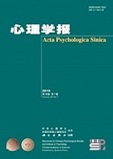|
|
VERIFYING THE COGNITIVE MODEL OF THEORY OF MIND
Sui Xiaoshuang,Su Yanjie
2003, 35 (01):
56-62.
The concept "theory of mind"(TOM) was first mentioned by Premack & Woodruff in 1978, which means a person can attribute mental state to oneself and others, predict one's behavior basing on his mind. Many researches in this field have shown that TOM could be divided into different components. Tager-Flusberg & Sullivan(2000)presented a cognitive model of TOM in their article for the first time. They thought TOM included two components, social perceptional component and social cognitive component. Perceptional component is connected with the emotion system, it means to judge people's intention, emotion, desire et al. rapidly by their facial expression, voice and body position. Cognitive component is related to the cognitive system, such as language. It needs to represent and reason people's mind before understanding their intention, desire and thought. In this article, several tests were made to further verify this model. The subjects were 90 3~5 year old preschool children. They were measured in language ability, TOM social perceptional component and social cognitive component. False belief task was used to measure cognitive component, and a new task was used to measure perceptional component, which was designed to suit children's characteristics. The relations of age, language and two components were analyzed. The results accorded with the model, and further proved the model
Related Articles |
Metrics
|




